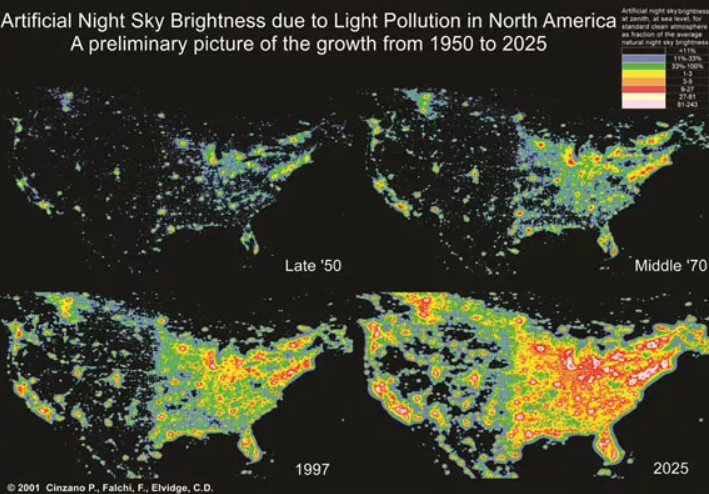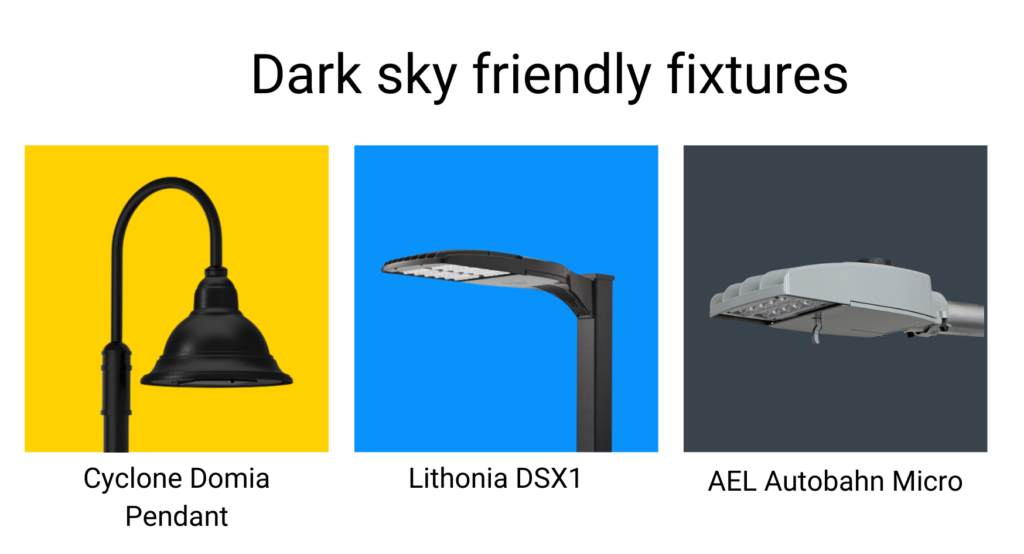Have you ever taken a moment to gaze at the night sky? For many people living in cities or suburbs, the answer might be no. Studies show that only about 20% of Americans can spot the Milky Way from their homes due to the overwhelming presence of artificial light.  This phenomenon, known as light pollution, occurs when excessive artificial light from streetlights, buildings, and advertisements obscures the natural beauty of the night sky. It's not just aesthetics that suffer; this excess illumination has far-reaching impacts on wildlife, human health, and the environment, including significant energy waste derived from fossil fuels.  Luckily, there are practical steps we can take to mitigate light pollution while still enjoying the benefits of outdoor lighting. In this article, we’ll explore strategies for lighting responsibly so you can savor stargazing without contributing to the problem.  According to International Dark-Sky Association (IDA), the global leader in preserving the night sky, light pollution refers to the human-induced alteration of natural nighttime lighting conditions. It’s not the presence of artificial light itself but the way it’s deployed and directed that poses the issue.  There are three main types of light pollution: trespass (light shining where it shouldn’t), glare (excessive brightness causing discomfort), and clutter (confusing clusters of light). Collectively, these contribute to skyglow, which is the general brightening of the night sky. One major factor is population growth. The United Nations reports that Earth’s population has more than tripled since the mid-20th century, leading to an increase in artificial light sources across the globe. Additionally, advancements in lighting technology, particularly the widespread adoption of LEDs, have contributed to the problem. Although LEDs are energy-efficient and long-lasting, their affordability encourages overuse, often resulting in lights being left on unnecessarily.  This map illustrates the rise of light pollution in the U.S. from the 1950s to today. Over 80% of Americans now live under skyglow, making it hard to see more than a few stars at night.  Believe it or not, light pollution affects all living beings, from tiny fireflies relying on bioluminescence for mating rituals to sea turtle hatchlings using moonlight to find their way to the ocean. These species have evolved with predictable patterns of light and darkness, and artificial light disrupts their natural rhythms. Humans, too, depend on periods of darkness to regulate our hormones and maintain healthy circadian rhythms. Exposure to artificial light at night can suppress melatonin production, leading to sleep disturbances, stress, anxiety, and various health problems.  The good news is that light pollution is a man-made issue, and therefore, it’s entirely within our power to address it. No matter your role—as an engineer designing streetlights or a landscape architect planning a park—you can take action to reduce light pollution and preserve the night sky.  When illuminating streets, parks, or pathways, focus on lighting specific areas instead of casting unnecessary light onto unintended spaces like residential properties or the sky itself. One effective solution is to use Dark Sky-friendly fixtures with full cutoff designs or shielding to direct light downward. The Illuminating Engineering Society (IES) has developed a rating system called BUG (Backlight, Uplight, and Glare) to measure how much light a fixture emits in different directions. To qualify as Dark Sky, the Uplight rating must be zero.  Many lighting situations don’t require constant high-intensity illumination. For instance, a shopping mall parking lot might only need full lighting during business hours, turning dimmer or off outside those times. Dimming features allow you to adjust brightness levels based on actual demand, saving energy when lights aren’t essential. Motion sensors can further enhance efficiency by activating lights when movement is detected and dimming or turning them off when no one is present.  Shielding and smart scheduling are crucial, but the color of light plays a vital role in minimizing disruption to both humans and wildlife. Early LED lights had a color temperature of 8,000K, emitting more than 45% blue light and causing discomfort. Advances in LED technology have lowered this to a warmer 3,000K. Opt for yellows, oranges, or reds whenever possible—they’re less disruptive to ecosystems and human health.  For more information on protecting the night sky, visit IDA. Their International Dark Sky Places Program includes over 130 communities, parks, and protected areas dedicated to sustainable lighting practices and public awareness.  If you’re ready to incorporate Dark Sky principles into your next lighting project, we’re here to assist! We offer compliant fixtures and can help tailor a lighting plan that enhances safety while reducing environmental impact.  LSZH FR Polyolefin Compounds For Power Cable FR LSZH Polyolefin Sheath Compounds,LSZH FR Power Cable Polyolefin Compounds,LSZH FR Polyolefin Insulation Compounds,High Flame Resistance Lszh Sheath Compounds Jiangsu Carrett Technology Co., LTD , https://www.jscarrett.comWhat Exactly Is Light Pollution?
Why Is Light Pollution Getting Worse?

Who Does It Affect?
How Can We Combat Light Pollution?
Light Only What’s Necessary
Light Only When Needed
Choose Warm White Lighting
Learn More About Dark Skies
Contact Us


